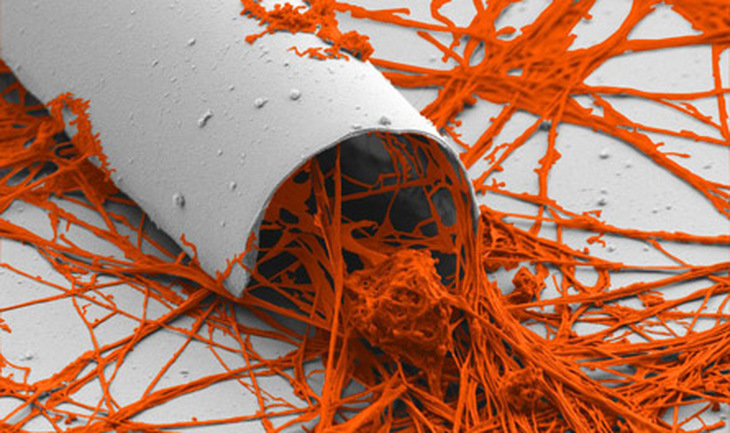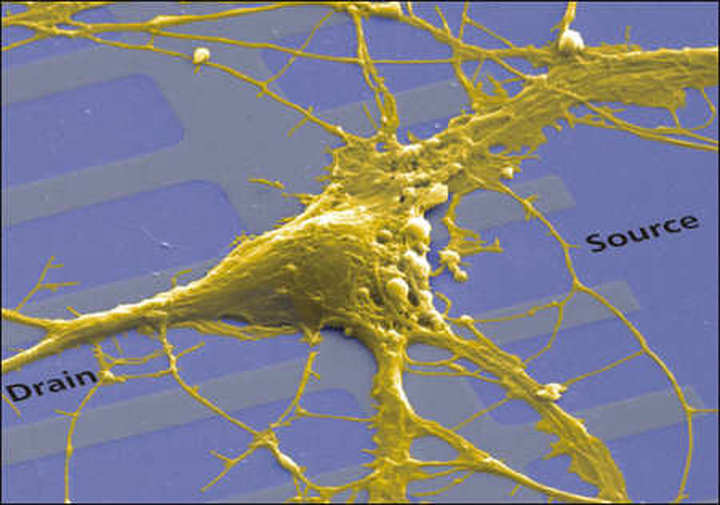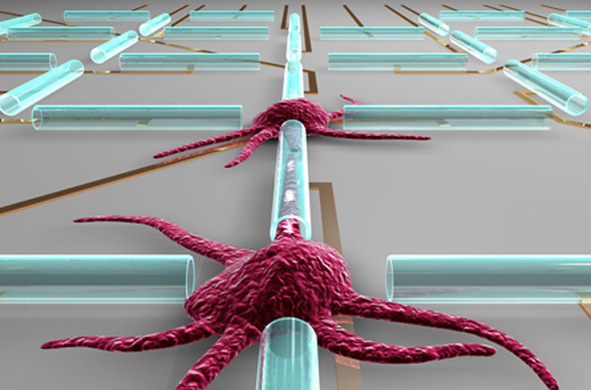

| Online: | |
| Visits: | |
| Stories: |

| Story Views | |
| Now: | |
| Last Hour: | |
| Last 24 Hours: | |
| Total: | |
Video: Nanotechnology Hybrid Could Combine Mind and Machine
“This is quite innovative and interesting,” says nanomaterials expert Nicholas Kotov of the University of Michigan in Ann Arbor. “There is a great need for interfaces between electronic and neuronal tissues.”
To lay the groundwork for a nerve-electronic hybrid, graduate student Minrui Yu of the University of Wisconsin–Madison and his colleagues created tubes of layered silicon and germanium, materials that could insulate electric signals sent by a nerve cell. The tubes were various sizes and shapes and big enough for a nerve cell’s extensions to crawl through but too small for the cell’s main body to get inside.
“They seem to like the tubes,” says biomedical engineer Justin Williams, who led the research. The approach offers a way to create elaborate networks with precise geometries, says Williams. “Neurons left to their own devices will kind of glom on to one another or connect randomly to other cells, neither of which is a good model for how neurons work.”
At this stage, the researchers have established that nerve cells are game for exploring the tiny tubes, which seem to be biologically friendly, and that the cell extensions will follow the network to link up physically. But it isn’t clear if the nerves are talking to each other, sending signals the way they do in the body. Future work aims to get voltage sensors and other devices into the tubes so researchers can eavesdrop on the cells.
Eventually, the arrangement may make it easier to couple living cells with technology on a larger scale, but getting there is no small task, says neuroengineer Ravi Bellamkonda of the Georgia Institute of Technology in Atlanta.
“There’s a lot of nontrivial engineering that has to happen, that’s the real challenge,” says Bellamkonda. “It’s really cool engineering, but what it means for neuroscience remains to be seen.”
Source: http://www.apparentlyapparel.com/news/nerve-electronic-hybrid-could-combine-mind-and-machine





